Gateway to Learning
Want to invest in crypto but don't know where to start?
Learn crypto through the simplest words.
 Must Read Daily Market Reports
Must Read Daily Market Reports
Must Read Daily Market Reports
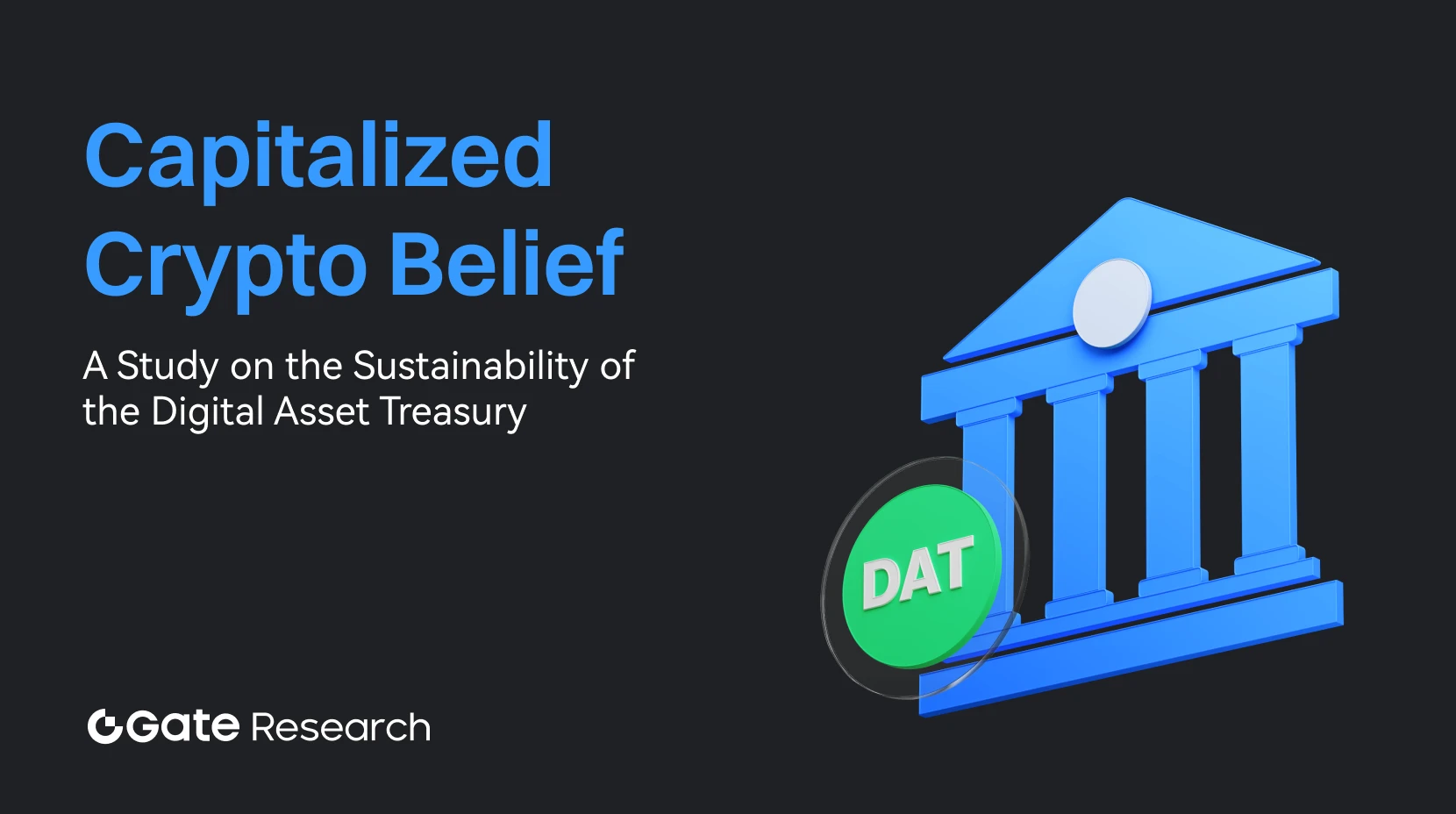 Gate Research: Capitalized Crypto Belief, A Study on the Sustainability of the Digital Asset Treasury
Gate Research: Capitalized Crypto Belief, A Study on the Sustainability of the Digital Asset Treasury
Gate Research: Capitalized Crypto Belief, A Study on the Sustainability of the Digital Asset Treasury
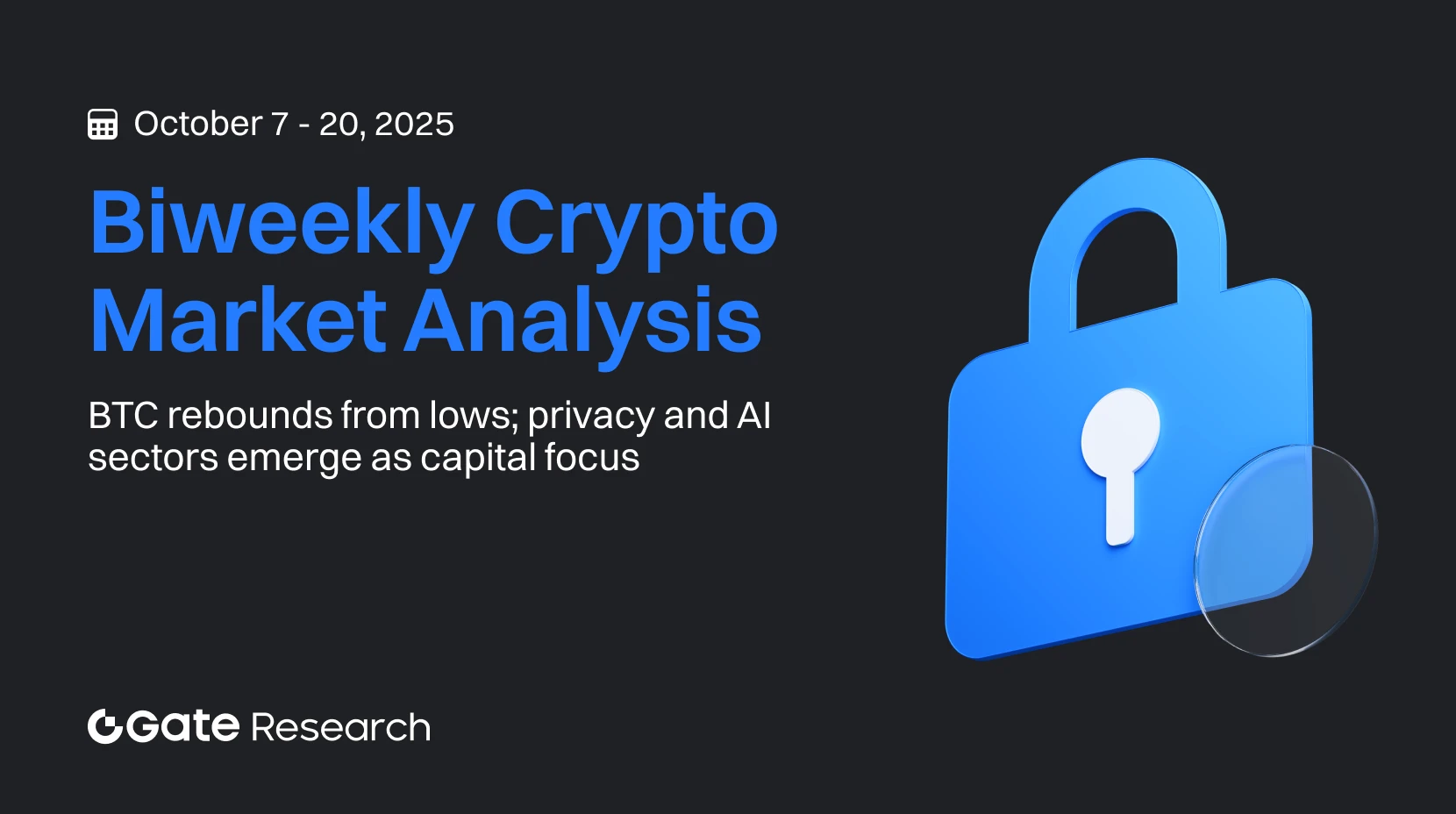 Gate Research: BTC Rebounds from Lows as Mid- and Small-Cap Narratives Heat Up — Privacy and AI Sectors Emerge as Capital Focus
Gate Research: BTC Rebounds from Lows as Mid- and Small-Cap Narratives Heat Up — Privacy and AI Sectors Emerge as Capital Focus
Gate Research: BTC Rebounds from Lows as Mid- and Small-Cap Narratives Heat Up — Privacy and AI Sectors Emerge as Capital Focus
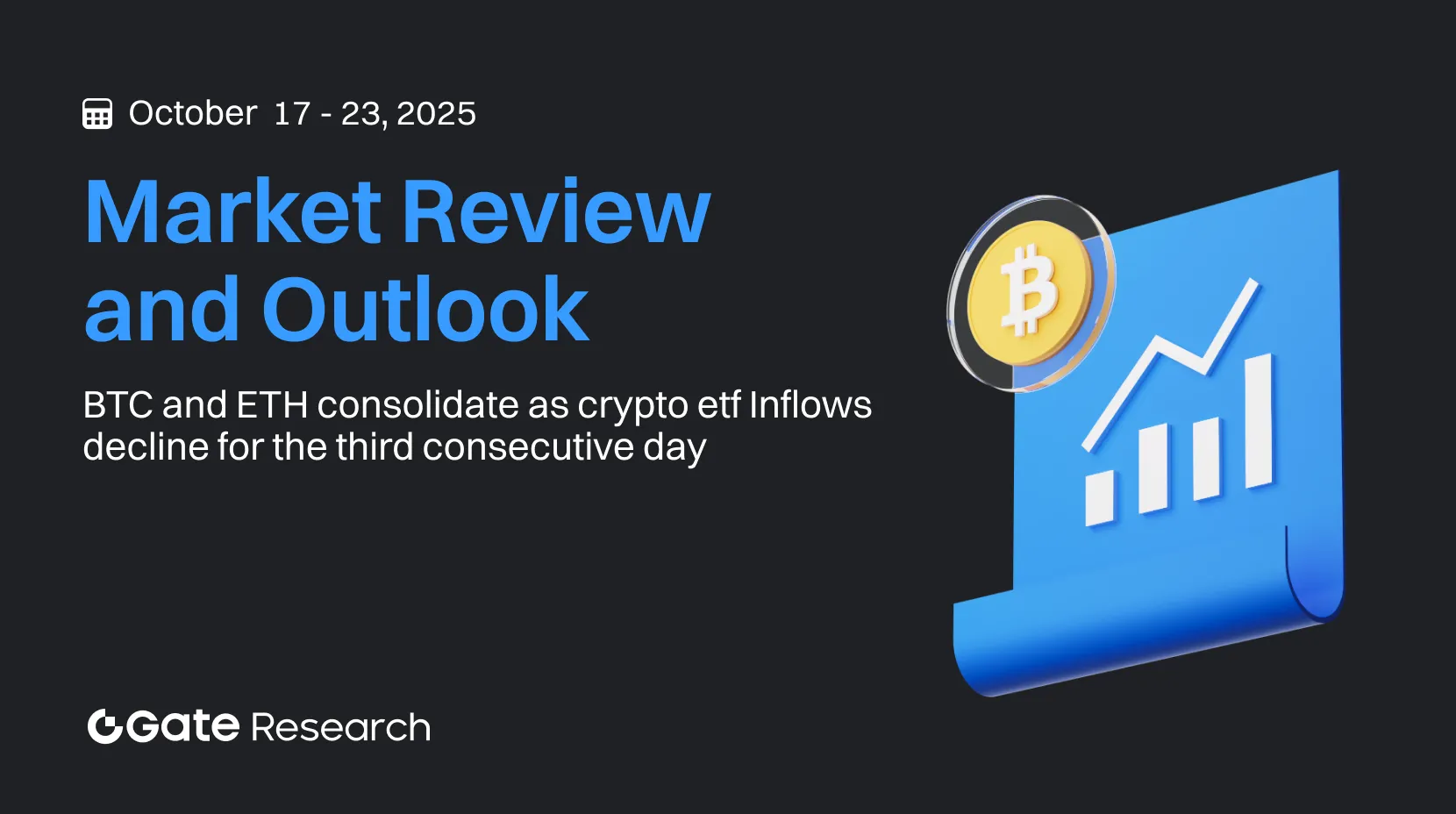 Gate Research: BTC and ETH Fluctuate in Sync | Crypto ETF Outflows Continue for Three Days
Gate Research: BTC and ETH Fluctuate in Sync | Crypto ETF Outflows Continue for Three Days
Gate Research: BTC and ETH Fluctuate in Sync | Crypto ETF Outflows Continue for Three Days
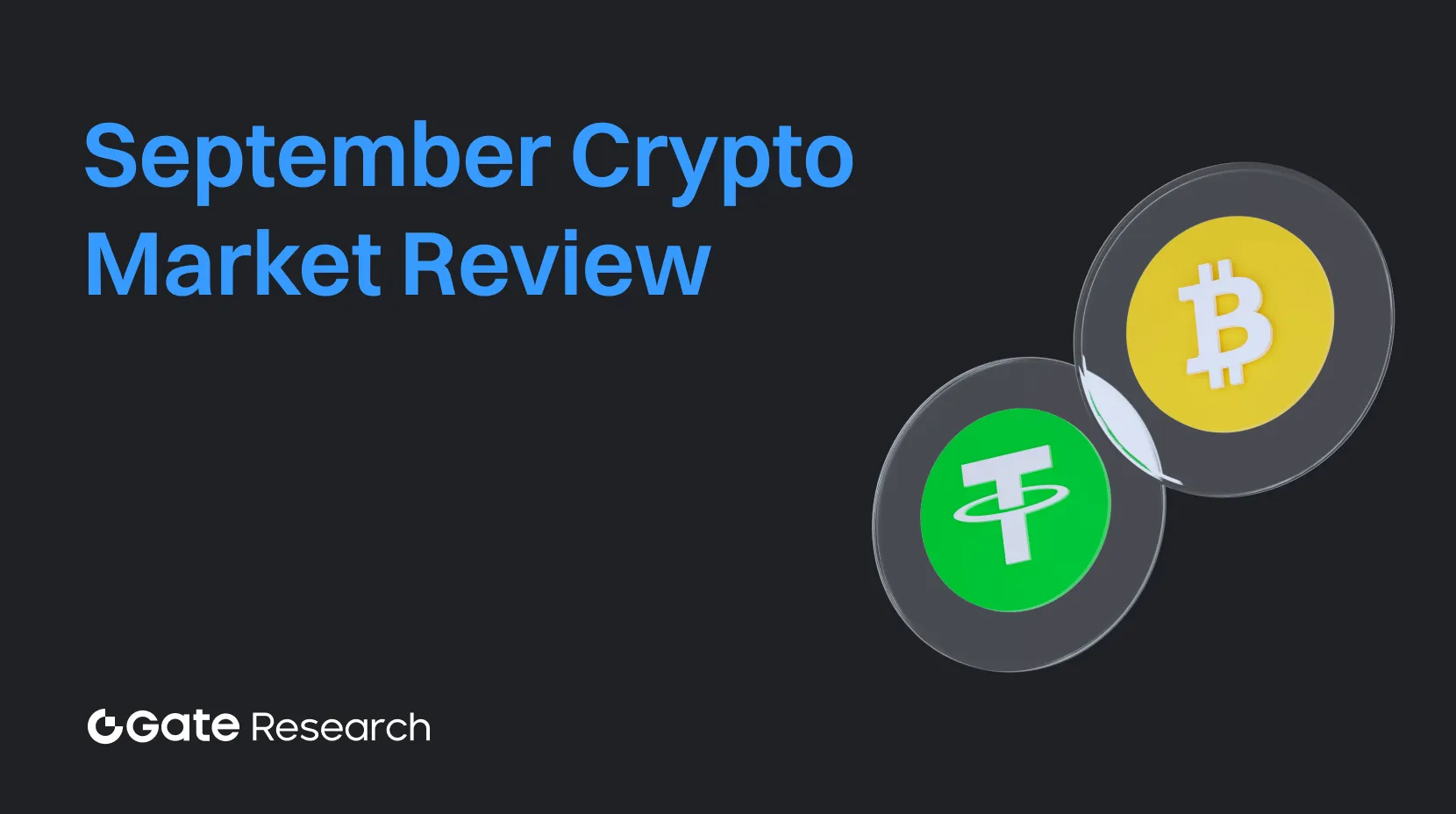 Gate Research: September Crypto Market Review
Gate Research: September Crypto Market Review
Gate Research: September Crypto Market Review
Featured Courses
More
Advanced
Tools That Help You Trade Better: Moving Averages, Trend Lines, and Indicators
There are no trading rules that are applicable to any scenario. These courses will help you establish your own trading strategy, then test it and improve on it in practice
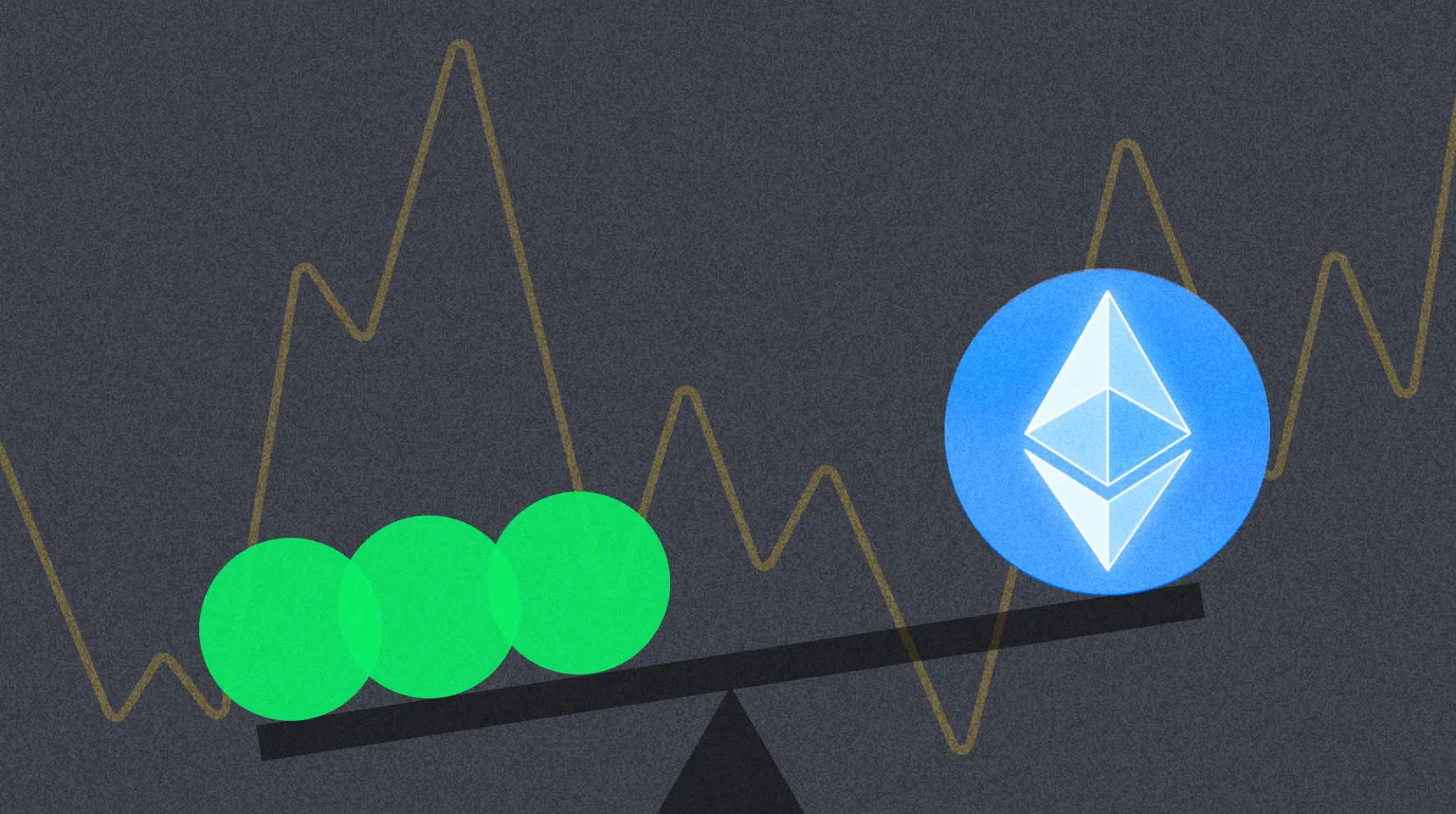
Intermediate
ETF Leveraged Tokens — Product Guide
This course provides a systematic explanation of the core mechanics behind ETF leveraged tokens — a product designed to deliver multiple times the daily returns of an underlying asset by hedging in the perpetual futures market. These tokens are high-risk, high-volatility instruments, best suited for short-term swing trading or hedging strategies.
When used properly, leveraged tokens can amplify gains or hedge market risk, offering key advantages such as:reduced losses in downtrends, and enhanced profits in uptrends.

Intermediate
Technical analysis: A useful tool to understand trends in Futures trading
Understand candlestick patterns and recognize market trends. Build a technical analysis system to make informed trading decisions
Learn by Topic
Topics
Altcoins
Bitcoin
Blockchain
DeFi
Ethereum
Metaverse
NFTs
Trading
Tutorial
Futures
Trading Bots
BRC-20
GameFi
DAO
Macro Trends
Wallets
Inscription
Technology
Meme
AI
SocialFi
DePin
StableCoin
Liquid Staking
Finance
RWA
Modular Blockchains
Zero-Knowledge Proof
Restaking
Crypto Tools
Airdrop
Gate Products
Security
Project Analysis
CryptoPulse
Research
TON Ecosystem
Layer 2
Solana
Payments
Mining
Hot Topics
P2P
Sui Ecosystem
Chain Abstraction
Options
Quick Reads
Video
Daily Report
Market Forecast
Trading Bots
VIP Weekly Industry Report
ETF Leveraged Tokens
Top Stories
XRP
Pi Network
VIP Daily Industry Report
In-Depth Research
Gate Ventures
Weekly Report
Investment News
Perpetual DEX
Web3 For Beginners
Tron
Base
Protocols
Dapp
Crypto Card
BNB Chain
Difficulty
Beginner
Intermediate
Advanced
Latest Courses
More
Beginner
Web3 & Metaverse
In this course, we’ll demystify two of the buzziest concepts in crypto and tech: Web3 and the Metaverse. By now, you’ve learned about blockchain technology, cryptocurrencies like Bitcoin and Ethereum, and the power of decentralization in Courses 1–3. Now we’ll build on that foundation to explore how those ideas are transforming the internet and virtual worlds. What do Web3 and metaverse actually mean, and why do they matter? By the end of this course, you’ll have a clear, beginner-friendly understanding of these concepts and how you can start exploring them.

Intermediate
Introduction to Programmable Oracle Networks
Blockchains are powerful but limited by their isolation from the outside world. Smart contracts can only process on-chain data, yet most real-world applications, from finance and insurance to gaming and logistics, depend on external information. Programmable oracle networks solve this problem by securely delivering and processing off-chain data for use on-chain. They extend blockchain functionality, enabling decentralized applications to interact with markets, APIs, sensors, and even other blockchains in a trust-minimized way.

Beginner
Introduction to Celestia Blob Markets & Rollkit
Celestia represents a fundamental redesign of blockchain architecture through its modular approach. Instead of requiring every blockchain to handle execution, settlement, consensus, and data availability within a single system, Celestia separates these functions into specialized layers. This allows developers to create sovereign and application-specific blockchains that outsource data availability and consensus to Celestia while retaining full control over their execution environments.
Latest Articles
More
Intermediate
Behind the “Solara” Hype: Meme Creators Are Finally Earning from Protocols
The Solana Chinese Name campaign unexpectedly gave rise to the breakout meme coin "索拉拉." Its market cap increased tenfold within just a few hours. Powered by the Trends.fun platform, creators were able to monetize memes for the first time. The platform's "information tokenization" model redefined the ICM concept, transforming tweets into tradable assets and introducing a new type of content capital market. This ushers in a new era for the meme economy.
10/24/2025, 11:42:34 AM

Intermediate
Coinbase acquires Echo: Unlocking the future of onchain capital formation
Coinbase announced the acquisition of on-chain fundraising platform Echo for approximately $375 million, aiming to build a more efficient and transparent crypto capital market. Founded by crypto OG Cobie, Echo has helped over 300 projects raise more than $200 million. The acquisition will integrate Echo’s private fundraising and Sonar public sale tools to provide founders and investors with end-to-end support — from token issuance and fundraising to secondary market trading.
10/24/2025, 11:22:14 AM

Intermediate
Crypto Infrastructure is Far From Perfect
Introducing the new “Features” function launched by Asia’s leading NFT platform **Cryptoart.ai (CART)**, which for the first time supports online NFT exhibitions, limited public sales, and interactive digital art showcases — strengthening the platform’s ecosystem position and enhancing user engagement in the crypto art market.
10/24/2025, 11:10:00 AM
Latest Research
More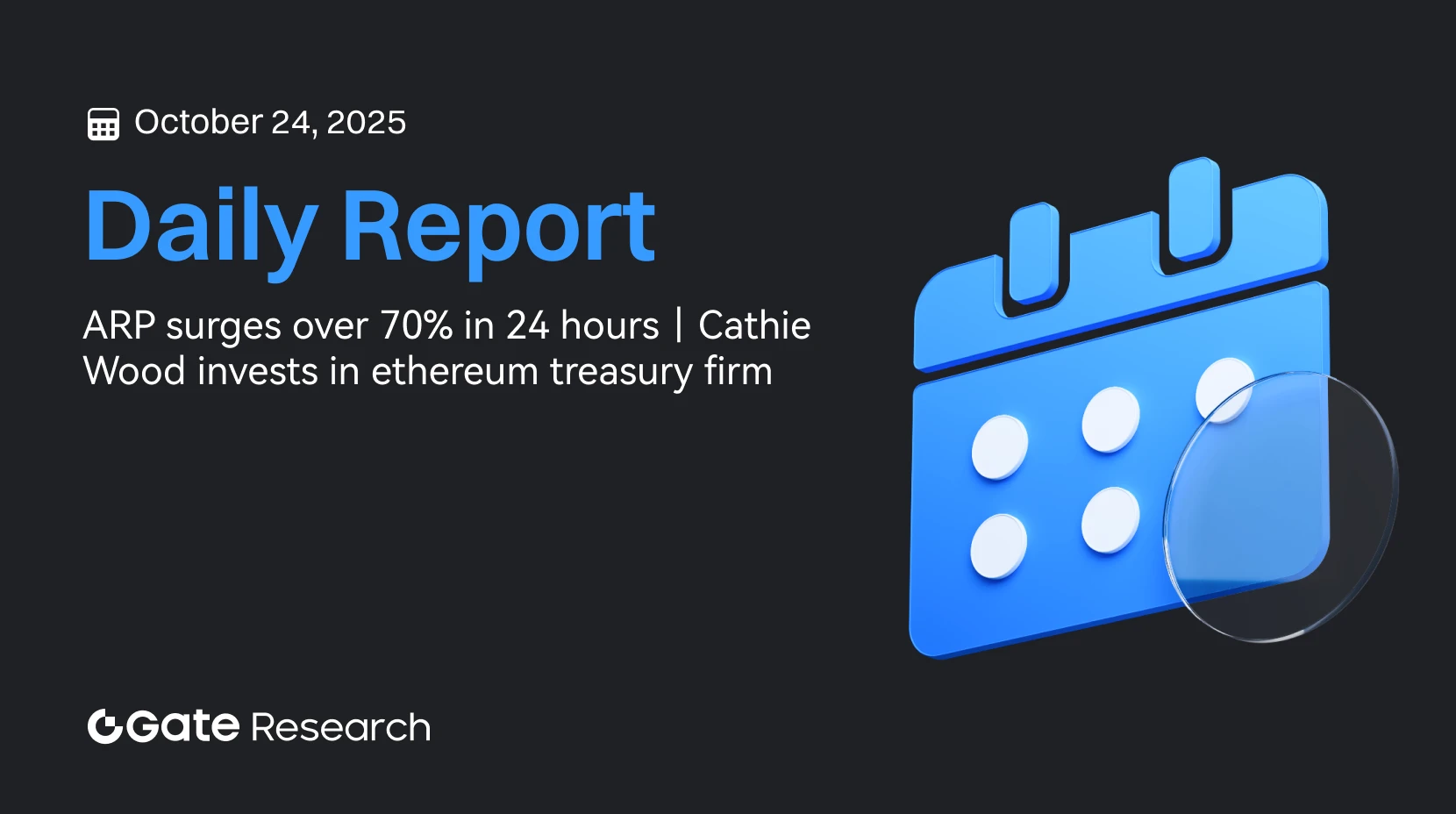
Advanced
Gate Research: ARP surges over 70% in 24 hours|Cathie Wood invests in ethereum treasury firm
Gate Research Daily Report: On October 24, BTC once again broke above the $110,000 mark; ETH showed a consolidating and choppy trend, rebounding slightly after finding support near $3,750; GT remained range-bound around $15.8. Most tokens continued their strong upward momentum, with market sentiment running high and trading activity notably increasing. Bitcoin’s return above $110,000 boosted optimism as market sentiment was lifted by policy and macroeconomic factors, while the awakening of a “Satoshi-era” wallet—dormant for 14 years and transferring 150 BTC—drew widespread attention.
10/24/2025, 8:01:22 AM
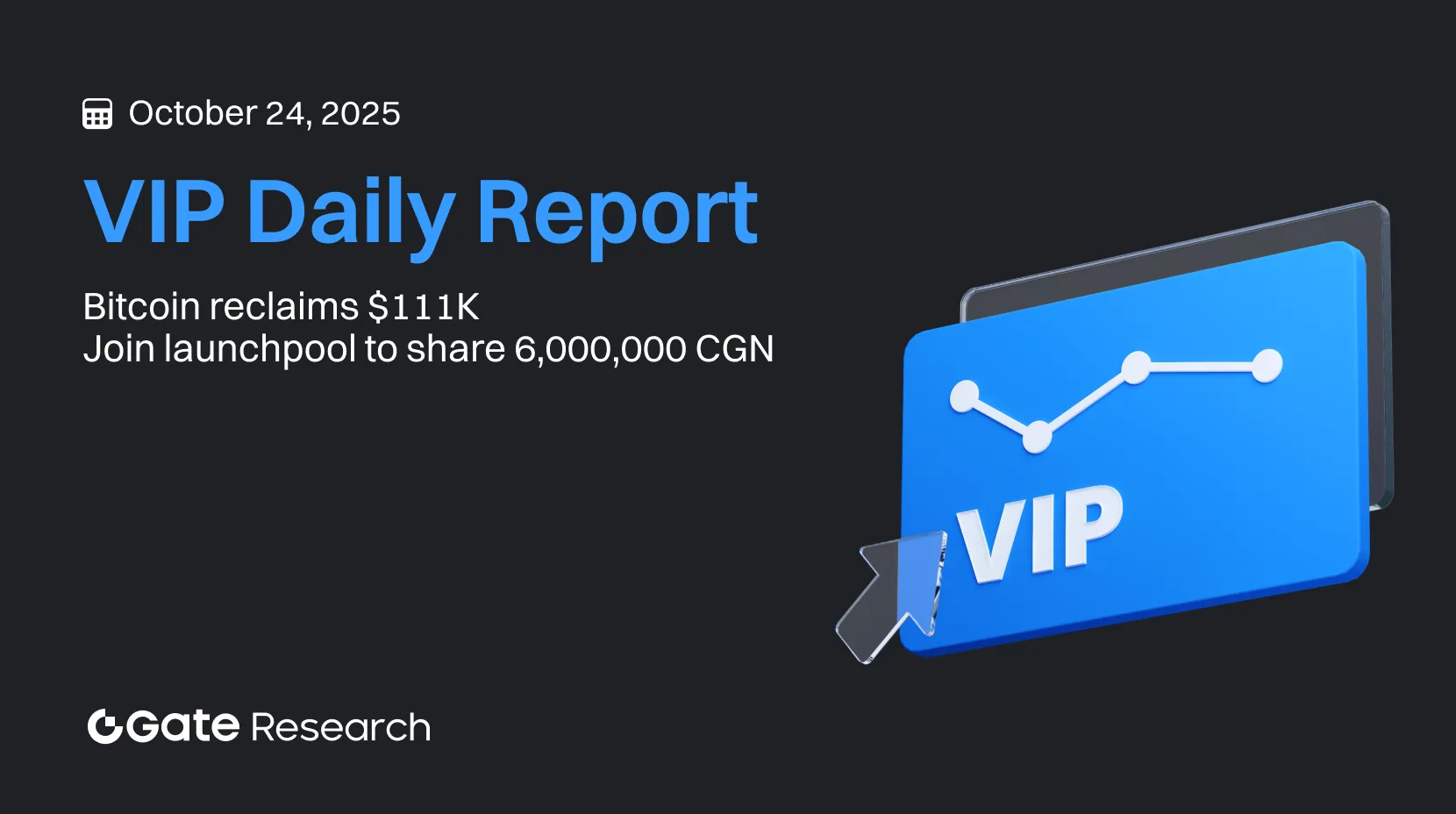
Advanced
 Gate Research: Bitcoin Reclaims $111K|Join Launchpool to Share 6,000,000 CGN
Gate Research: Bitcoin Reclaims $111K|Join Launchpool to Share 6,000,000 CGN
Gate Research Daily Report: On October 24, BTC once again broke above the $110,000 mark; ETH showed a consolidating and choppy trend, rebounding slightly after finding support near $3,750; GT remained range-bound around $15.8. Most tokens continued their strong upward momentum, with market sentiment running high and trading activity notably increasing. Bitcoin’s return above $110,000 boosted optimism as market sentiment was lifted by policy and macroeconomic factors, while the awakening of a “Satoshi-era” wallet—dormant for 14 years and transferring 150 BTC—drew widespread attention.
10/24/2025, 7:14:21 AM
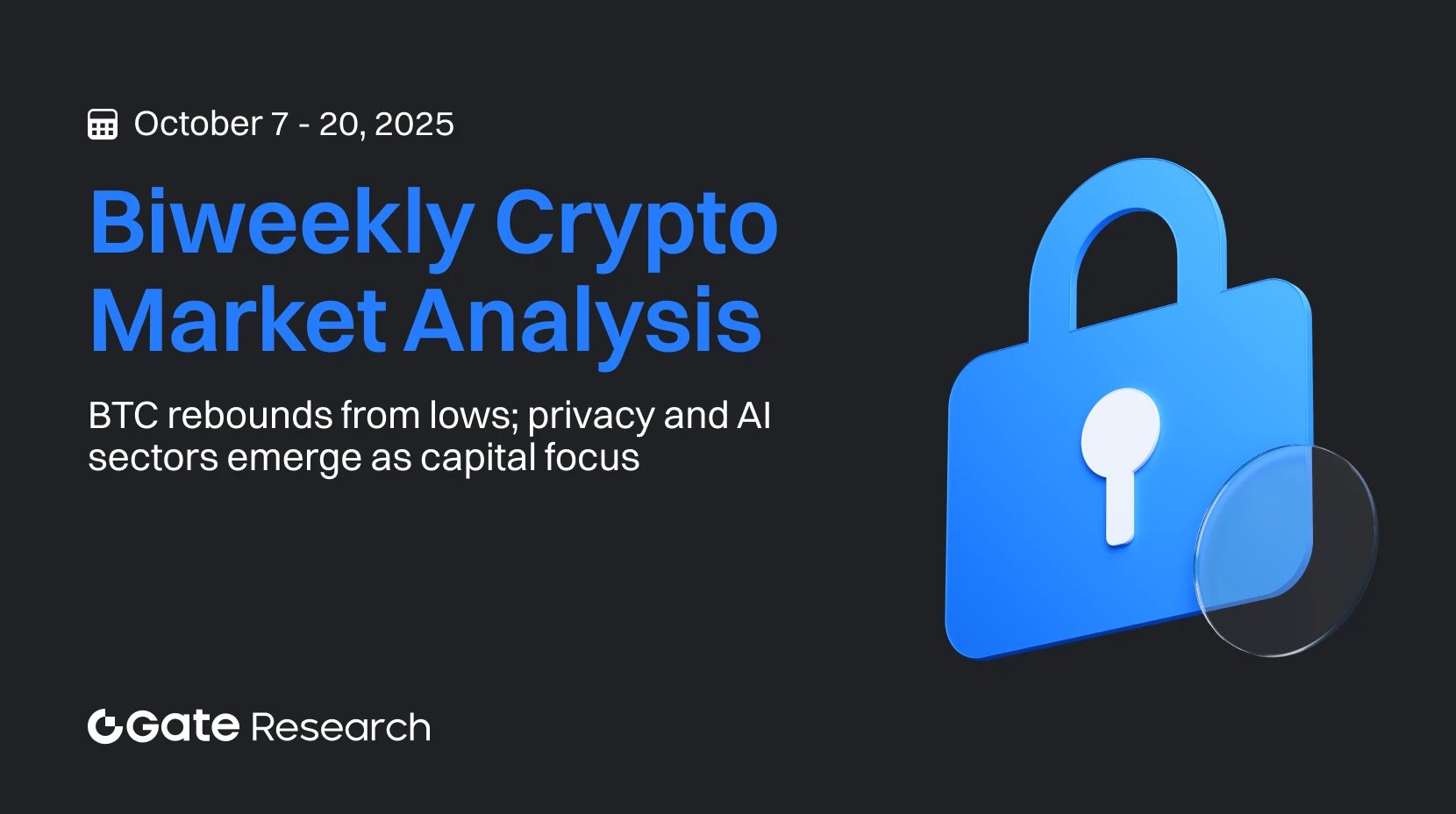
Advanced
Gate Research: BTC Rebounds from Lows as Mid- and Small-Cap Narratives Heat Up — Privacy and AI Sectors Emerge as Capital Focus
From October 7 to October 20, 2025, the crypto market continued its rotational structure, with BTC rebounding from 102,100 USDT and ETH stabilizing near 3,680 USDT before moving upward. RAIL surged over 125%, driven by renewed interest in privacy narratives and anticipation of upcoming compliance summits, while COAI and H both gained more than 110%. Overall, capital flowed primarily into mid- and small-cap tokens, with strong rotations across privacy, AI, and on-chain computing themes. Recently, several trending projects in NFT, DEX, and AI sectors have also launched airdrop campaigns, providing users with opportunities to capture rebound momentum and early participation rewards.
10/23/2025, 7:28:58 AM
Glossary
Moreapr
Annual Percentage Rate (APR) is a financial metric expressing the percentage of interest earned or charged over a one-year period without accounting for compounding effects. In cryptocurrency, APR measures the annualized yield or cost of lending platforms, staking services, and liquidity pools, serving as a standardized indicator for investors to compare earnings potential across different DeFi protocols.
fomo
Fear of Missing Out (FOMO) is a psychological state where investors fear missing significant investment opportunities, leading to hasty investment decisions without adequate research. This phenomenon is particularly prevalent in cryptocurrency markets, triggered by social media hype, rapid price increases, and other factors that cause investors to act on emotions rather than rational analysis, often resulting in irrational valuations and market bubbles.
nft
NFT (Non-Fungible Token) is a unique digital asset based on blockchain technology where each token possesses a distinct identifier and non-interchangeable characteristics, fundamentally different from fungible tokens like Bitcoin. Created through smart contracts and recorded on the blockchain, NFTs ensure verifiable ownership, authenticity, and scarcity, primarily applied in digital art, collectibles, gaming assets, and digital identity.
leverage
Leverage refers to a financial strategy where traders use borrowed funds to increase the size of their trading positions, allowing investors to control market exposure larger than their actual capital. In cryptocurrency trading, leverage can be implemented through various forms such as margin trading, perpetual contracts, or leveraged tokens, offering amplification ratios ranging from 1.5x to 125x, accompanied by liquidation risks and potential magnified losses.


Your Gateway to Crypto World, Subscribe to Gate for A New Perspective
